About a week ago, my wife and son and I visited my parents. We used to make the trip over to their house on the New Hampshire Seacoast two or three times a month and stay for the weekend, but since the boy was born, both the regularity and duration has been halved. Just too tough to load up an infant/toddler and all the required accessories and make sure he’s behaving with his cousins and still enjoy oneself for more than a few hours at a time.
Still, for a variety of reasons, I like to visit. Obviously, I like to see my parents – even at thirty, there’s nothing like my mother’s home cooking, and my father and I have spent many an evening in the kitchen, talking about everything from the Red Sox to Barack Obama – and they like to see their grandson, but more than that, I just like being in the house. While my wife moved around a lot as a kid, I am very fortunate in that my parents still live in the house in which I grew up. Until I moved in with my wife a few months before we married, it was the only home I had ever known, and though it may be lacking in a great many respects – my mother wants nothing more than to win the lottery, buy a ton of dynamite, and blow the place up; if you know my mother, you understand that SHE WILL DO THIS if given the opportunity – the simple truth remains that it is home.
The best part about the house is the backyard. Whereas most of the other homes on the street sit parallel to the road, this 215-year-old monster, built by my father’s ancestor Joseph Locke in the 1790s, stands at an angle, maybe fifteen feet from the road at its closest point. This isn’t always a good thing: when I was nine or ten, a drunk driver mistook my parents’ bedroom for an empty parking space, slamming into the outside wall hard enough to separate it from the rest of the building. It’s a fascinating and frightening thing to stand in your living room and look up at a star-filled sky. Fortunately, the accident occurred early in the evening and nobody was injured. On the plus side, they own an acre of land, and a house that sits near the front of an acre of land allows for a huge backyard. My parents’ yard is bordered on three sides by a stone wall and squeezed another fifteen feet or so by a variety of trees, leaves, and other growth. Down the middle, though, was a wide, open expanse of sometimes rocky, sometimes mossy grass that allowed plenty of room for four children (and later, their children) to run unencumbered.
That wide, open space was where I learned to play and love baseball.
Not long after we arrived last weekend, as I was searching the freezer for something to eat, my father mentioned that my older nephew had decided, at the age of eleven, to try his hand at Little League for the first time. My father and brother-in-law had been taking him out and working with him a little bit on throwing and catching, but my father thought that maybe it would somehow help him to see the ball coming from the left side. So we took him out into the backyard to throw the ball around. In keeping with the family tradition begun by my old man, who taught me to play the game while wearing a ratty old Walt Dropo model first baseman’s mitt (that he still owns and uses), I wore a glove that my grandfather gave me twenty years ago. A Pedro Guerrero model, I rarely touched it as a boy, preferring instead the Don Mattingly model that my dad bought me; I used that glove until my freshman coach in high school ordered me to buy a new one that would allow me to actually catch the ball. That new glove served me well enough, but I don’t think it has anybody’s name in it, which is a pity.
So out we went into the spacious backyard (made even more spacious by the violent windstorms that have made a habit of tearing through every year or so and taking down a handful of mountain ash and maples) and threw the ball back and forth while I looked around and had myself a bit of introspective reminiscence. There was the stone wall separating my parents’ yard from the neighboring Ritzos, the first wall I ever hit a ball over; I had probably lost fifty baseballs over the years in the huge piles of dead leaves on the edge of Mr. Ritzo’s property.
There was the wall at the back of the property, about 200 feet away, where I took aim as a ten-year-old, celebrating wildly whenever a long drive so much as approached it. In my mind’s eye, there was the old metal swing set that doubled as my first base and the tire nailed to the tree that served as second. The tree that I considered third base, where I once made my five-year-old sister stand and act as a third base coach, giving me signals to slide or stand, is still standing – well, part of it, anyway; the rest has succumbed to the wind.
As my son ran wildly across the open space, chasing a ball here, scampering through a puddle there, I thought about some of the baseball-related moments that took place in that yard. My Aunt Rose, who later helped inspire a lengthy obsession with Jewish major leaguers, whipping a low throw that I couldn’t handle, bruising my left thumb for the first time. My brother leaning his upper body back, back, back, his hand almost touching the ground like Juan Marichal, then unleashing towering pop flies for me to circle under and catch. My father, during a routine game of catch, accidentally hitting me on the head with a throw, the impact of the ball actually leaving a small indentation just above the hairline (I still remember the way he tried to make me laugh after the fact, to make me forget the pain).
I learned to play baseball there, often by myself: throw the ball up in the air, hit it, run to pick it up, back to home plate, repeat. Emulating the Red Sox lineup could have turned me into a pretty fair switch-hitter, had I ever dared give it a try when the stakes were real. When he was available, my dad would come out and throw a few, or hit some grounders and pop flies, rewarding good plays with quiet praise and explaining necessary improvements with clear direction.
I tried to do the same with my nephew, offering a few simple instructions on which way to turn his glove and why he needed to move his feet instead of trying to reach out and stab at errant throws. What I found difficult to express, though, was something that my father never really talked about with me, not explicitly anyway: the fact that throwing and catching a ball is just the beginning. To really know the game, to really love it, you have to move beyond those simple acts until you find something deeper and more personal.
———————————————————————————————————–
 My favorite baseball player growing up wasn’t Dwight Evans, or Jim Rice, or Mike Greenwell, or Ellis Burks, or Marty Barrett, or Wade Boggs (although, as a left handed hitter, I was thankful for any lefty to emulate in the lineup). No, my favorite was Kevin Romine, an extra outfielder who played 331 games in seven seasons with the Red Sox. Romine was a star at Arizona State in the early 1980s, compiling a school-record .408 batting average and 86 stolen bases in two seasons and playing a key role on the 1981 team that won the College World Series. He was drafted by the Red Sox in 1982 and signed by scout Ray Boone. In 1996, he was elected to the Arizona State Hall of Fame; in 2006, the school retired his number. His older son, Andrew, was the last player to wear it.
My favorite baseball player growing up wasn’t Dwight Evans, or Jim Rice, or Mike Greenwell, or Ellis Burks, or Marty Barrett, or Wade Boggs (although, as a left handed hitter, I was thankful for any lefty to emulate in the lineup). No, my favorite was Kevin Romine, an extra outfielder who played 331 games in seven seasons with the Red Sox. Romine was a star at Arizona State in the early 1980s, compiling a school-record .408 batting average and 86 stolen bases in two seasons and playing a key role on the 1981 team that won the College World Series. He was drafted by the Red Sox in 1982 and signed by scout Ray Boone. In 1996, he was elected to the Arizona State Hall of Fame; in 2006, the school retired his number. His older son, Andrew, was the last player to wear it.
I didn’t know any of that when I was eight years old, though. All I knew about Romine was that he was born in Exeter, New Hampshire (just a couple towns over from where I grew up; who cares if he was raised in California?), he had an awesome ‘stache, and he hit the first walkoff homerun I ever saw.
Most of the details of that game were fuzzy until Retrosheet and Baseball-Reference came along. Without those two resources, I wouldn’t be able to tell you what I’m about to tell you.
The homerun came on July 16, 1988, against the Kansas City Royals. Romine entered the game in the sixth inning as a pinch-runner, part of a four run rally that trimmed a 6-0 Royals lead to 6-4. He stayed in the game in right field and drew his third walk of the season the next inning before being stranded. The Sox tied it with two runs in the eighth. They actually had a chance to take the lead going into the ninth, with runners on first and second, one out, and Boggs at the plate, but the eventual American League batting champion grounded to Brad Wellman at second, who threw to Bill Pecota for one and on to George Brett at first for one of the Chicken Man’s league-leading 23 double plays.
Boggs was the Red Sox best hitter in 1988 – he would lead the league in nine categories, including OPS – and as such was penciled into the third spot in the lineup. Once upon a time, he would have been followed by the dangerous Jim Rice. But because this was 1988 and Rice was deep into Year 2 of a sudden and precipitous decline, he was no longer feared, and no longer Boston’s cleanup man. That honor instead went to Greenwell, the second-year player who had succeeded the legendary triumvirate of Williams, Yaz, and Rice in front of the Green Monster and was making it look like he would one day join them on the Mount Rushmore of Red Sox left fielders. On his way to a second-place finish in the MVP voting behind Oakland’s Jose Canseco, Greenwell finished the season with a .325 batting average, 22 homeruns, and 119 RBI.
When the time came for the ninth inning to start on July 16, however, Greenwell wasn’t in the game. He was the player Romine had replaced as a pinch-runner back in the sixth inning. Why did Joe Morgan pull one of his best hitters midway through a winnable game? Who knows. Maybe Greenwell was feeling under the weather that day. Maybe Morgan thought the team needed a spark after falling behind 6-0. Maybe the new manager just got one of his soon-to-be famous (or infamous, depending on who you asked) hunches and decided to make a change. Whatever the reason, when the ninth inning started, eight-year-old Brian was sitting in front of the television waiting for Steve Farr to pitch to Kevin Romine, a fourth or fifth outfielder with almost exactly half the batting average and OPS of Mike Greenwell.
It took so little time for Romine to become a permanent piece of my baseball fanhood. He had hit nearly 50 homeruns in the minor leagues, the majority of them at Triple-A Pawtucket, but none in the majors. That changed on Farr’s first pitch: Romine turned on the offering and lofted it high and deep and gone into the screen above the Green Monster. His first major league homerun won the game for the Red Sox, 7-6.
Almost exactly four months later, at the age of 27, he became a father for the third time when his second son, Austin, was born.
————————————————————————————————————
The familial aspect is one of my favorite things about baseball. You could  probably say it’s the thing that makes it personal for me. We learn the game from our fathers and brother and uncles, so there’s something special about looking out on the field and seeing a guy and knowing that your father watched his father play, or that his brother plays for the Reds, or sitting at the kitchen table with your uncle and hearing stories about the great players he saw when he was young. It strengthens the generational bonds and adds a dimension to the game that not all other sports can boast.
probably say it’s the thing that makes it personal for me. We learn the game from our fathers and brother and uncles, so there’s something special about looking out on the field and seeing a guy and knowing that your father watched his father play, or that his brother plays for the Reds, or sitting at the kitchen table with your uncle and hearing stories about the great players he saw when he was young. It strengthens the generational bonds and adds a dimension to the game that not all other sports can boast.
The scout who signed Kevin Romine, Ray Boone, was the first piece in the first three-generation family in baseball history; his son, Bob, spent nineteen seasons with the Phillies, Angels, and Royals, and two grandsons – Bret and Aaron – played a combined 26 seasons in the majors.
Three years ago, Romine (now a police detective in California) himself officially became the patriarch of a baseball family when his two boys, Andrew and Austin, were selected by the Yankees and Angels in the fifth and second rounds, respectively, of the 2007 draft. Austin, born four months after his father’s homerun beat the Royals, was taken straight out of high school; Andrew followed Kevin’s footsteps to Arizona State, twice played in the College World Series, and was named to the school’s All-Decade Team.
 Though I saw news of the Romine brothers’ exploits – Austin was the Yankees Minor League Player of the Year in 2009 – I had never really put two and two together and connected them to Kevin. Later in the evening, after playing ball with my nephew, I sat down to peruse the Baseball America Prospect Handbook. It was there that I stumbled upon the Brothers Romine and finally realized that they were the offspring of my long ago hero. Austin is the better prospect of the duo – a 21-year-old catcher expected to replace Jorge Posada within a couple years, he is the second-rated prospect in the entire Yankees organization – while 24-year-old Andrew came in at #27 on the list for the Angels and projects more as a player who will have to get by on defensive excellence.
Though I saw news of the Romine brothers’ exploits – Austin was the Yankees Minor League Player of the Year in 2009 – I had never really put two and two together and connected them to Kevin. Later in the evening, after playing ball with my nephew, I sat down to peruse the Baseball America Prospect Handbook. It was there that I stumbled upon the Brothers Romine and finally realized that they were the offspring of my long ago hero. Austin is the better prospect of the duo – a 21-year-old catcher expected to replace Jorge Posada within a couple years, he is the second-rated prospect in the entire Yankees organization – while 24-year-old Andrew came in at #27 on the list for the Angels and projects more as a player who will have to get by on defensive excellence.
————————————————————————————————————
My son turns three-years-old this summer. He’s not at the level his cousin is, ready to go outside and learn the right way to catch and throw and swing a bat; he’s far more interested in picking up sticks, throwing rocks, jumping in puddles, chasing balloons. And that’s okay, obviously – he’s TWO. The other day, though, somebody gave him a miniature plastic baseball. Every so often, he’ll pick it up, show it to me, and declare, “Bay ball!” which makes me think there’s a love of the game somewhere in him, and someday it will find a way to the surface.
I love parallels. When Kevin Romine hit that homerun to beat the Royals, he was 27 years old; I was eight. In the 2016 season, Austin Romine will be 27 years old; my son will be eight. And I like to believe that even though he’ll probably be playing for the Yankees, Austin will do something to make my son say, “Wow,” and we’ll go out to the backyard with his cousin and my dad and have a catch while I tell them about this guy’s dad, a guy named Kevin who was once my favorite player.

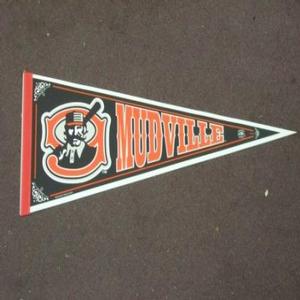
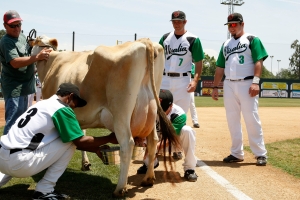
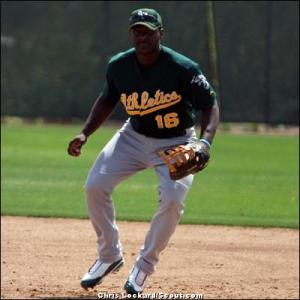

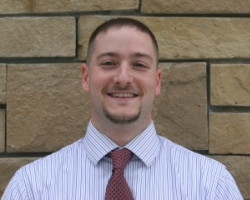





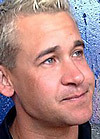
Recent Comments